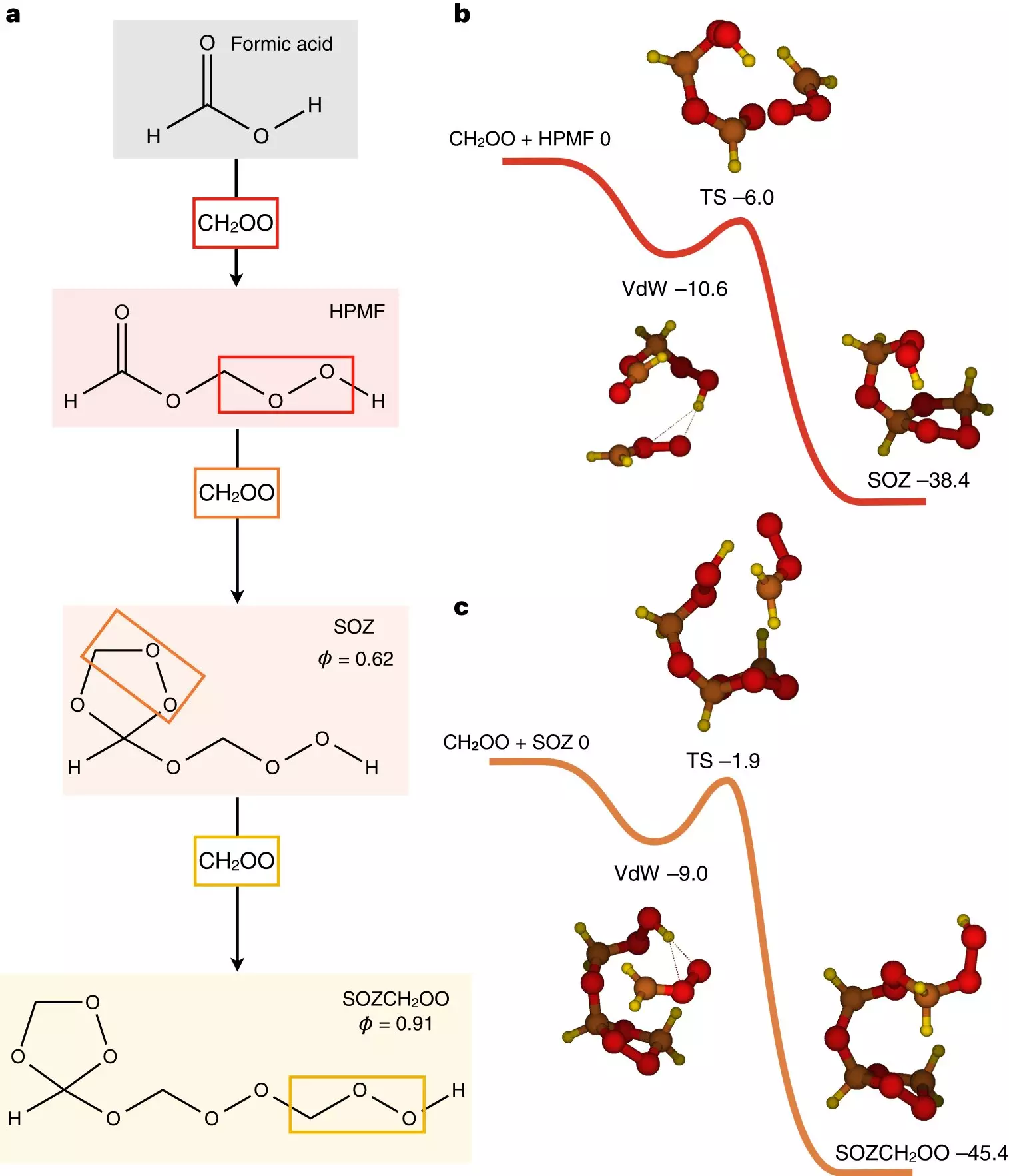The Earth’s troposphere is the lowest layer of its atmosphere, containing eighty-five percent of the planet’s air. However, there are still significant gaps in our understanding of the atmospheric chemistry that influences changes in its composition. One crucial area of research is the formation and prevalence of secondary organic aerosols (SOAs), which have wide-ranging impacts on the Earth’s radiation balance, air quality, and human health. Recent groundbreaking discoveries by an international team of researchers led by the U.S. Department of Energy’s Argonne National Laboratory, Sandia National Laboratories, and NASA’s Jet Propulsion Laboratory (JPL) have shed new light on this important topic.
The team’s research focused on a class of compounds known as Criegee intermediates (CIs), which are believed to play a significant role in the formation of SOAs through a process called oligomerization. By performing field measurements in the Amazon rainforest, a critical area for SOA formation, the researchers were able to directly identify chemical signatures of these processes for the first time. This discovery marks a significant milestone in our understanding of tropospheric chemistry.
The team’s findings have far-reaching implications for atmospheric models. They discovered that CI chemistry may have a much larger impact on the composition of the troposphere than previously thought, potentially by an order of magnitude. Additionally, the updated modeling based on their work only accounted for a fraction of the observed oligomerization signatures in the field. This discrepancy suggests that there may be additional, unidentified chemical mechanisms at play or that CI chemistry has an even more significant role in tropospheric transformations than currently understood.
Future Research Directions
Despite these significant discoveries, the researchers acknowledge that there is still a great deal of work to be done to fully comprehend the role of CI reactions in the troposphere. Continued research and collaboration across laboratories will be essential in further defining the impact of Criegee intermediates on atmospheric chemistry. Through advanced experimental methods, theoretical kinetics, and global chemistry modeling, scientists can continue to uncover the complexities of tropospheric processes and improve our understanding of the Earth’s atmosphere.
The research conducted by the international team of researchers has provided valuable insights into the critical role of Criegee intermediates in tropospheric chemistry. By bridging the gap in our understanding of SOA formation and prevalence, these discoveries pave the way for further advancements in atmospheric science and environmental research. The implications of their findings underscore the importance of continued exploration and collaboration in uncovering the complexities of Earth’s atmosphere.


Leave a Reply